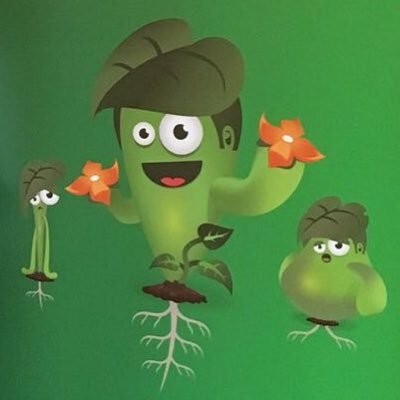
soilsymbiotics
@SoilSymbioticsWe empower farmers with the know-how and tools needed to produce high yielding, nutrient dense crops that regenerate soils and enliven agriculture systems.
Similar User

@samdknowlton

@AcademySoil

@AdvancingEcoAg

@UnderstandingAg

@HarrietCherry1

@IntegratedSoils

@CoverCropCoach

@Continuum_Ag

@BugLundgren

@glomalin

@greenhousegrow

@TheGreenFarmCo1

@GreenCoverSeed

@realJohnKempf

@SavoryInstitute
The soil microbiome has an outsized impact on the phytochemical and nutrient content of agricultural crops. In practical terms, we perceive this through flavor and aroma. One study on Italian wheat varieties demonstrated a significant difference in bread flavor profiles when…
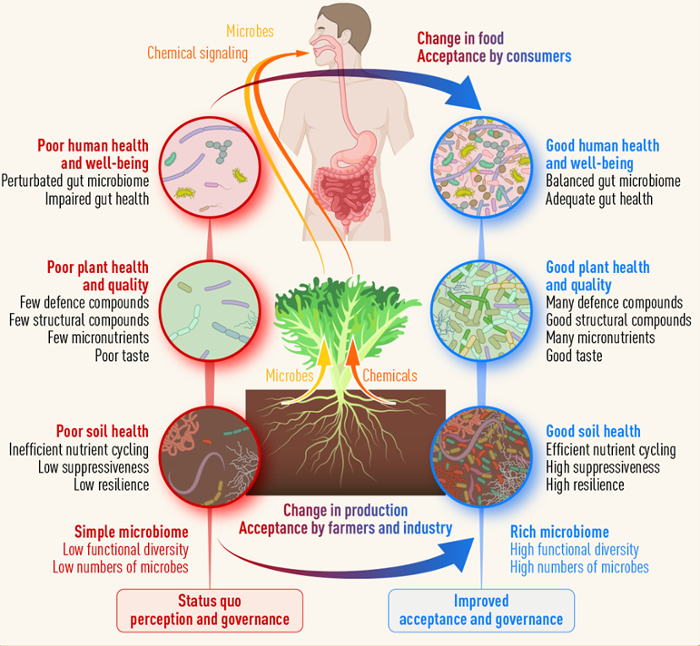
This video shows real-time carbon flows inside a mycorrhizal network. Mycorrhizal fungi form a symbiotic relationship with ~ 90% of terrestrial plants and have done so for 400 million years. These specialized fungi provide plants with nutrients and water in exchange for…
Generations of farmers and agronomists have been taught that Nitrogen is the most limiting factor in plant growth. Despite this supposed axiom, plant growth is most limited by water.

It's a common belief that cattle cause ecological destruction. So common that Allan Savory, whose grazing framework has been used to regenerate 40 million acres, once held this belief. That is, until he came across the work of a little-known Frenchman

Born in 1888, Dr. William Albrecht was a preeminent soil scientist and the leading authority connecting soil fertility and human health. He developed an interdisciplinary soil fertility method that is still used by thousands of farmers worldwide today Here is some of his story:

Coffee fills an estimated 2 billion cups per day. Coffee trees cover 11 million hectares of land throughout the tropics. The production of coffee is facing the perfect storm of challenges that may drastically change the daily reality for consumers and farmers alike...

California’s almond-growing region covers over 1 million acres and is where ~80% of the world’s almonds are produced, valued at more than $10 billion. The entire industry relies on imported bees for pollination, without which there would be no almonds.

The essential role soil microorganisms play in agricultural has been documented since at least the 1800s In the last 200 years, we’ve made little progress in our understanding and practical application of soil life to farming systems That is until about ten years ago…

The prevalent and persistent use of glyphosate on farms destroys the vital soil microbiome and compromises basic plant metabolism. As a result, our food supply is increasingly nutrient-poor and contaminated with glyphosate residue. A quick breakdown:

The quality and quantity of bell peppers on this farms continues to impress. Optimal plant nutrition and vibrant, living soil propelled the yields of this organic farm beyond those of conventional bell peppers while producing a nutritive quality rarely seen

Column: Coffee Has a Nitrogen Fertilizer Dilemma dailycoffeenews.com/2022/06/07/col… @samdknowlton
Opinion: The End of Coffee is Near dailycoffeenews.com/2022/04/20/opi…
This coffee farm endured 3 decades of heavy fungicide use. After 3 years of no fungicides and an intensive program to restore soil and plant health the farm has become a paradise for beneficial fungi. Higher yields and improved coffee quality to boot.
With a quick turnaround from harvest to flowering, these coffee trees are displaying some exceptional vegetative growth. Rare to see on most coffee farms, this is an expression of superior vigor, health, and nutritional integrity. Zero synthetic fertilizers, zero fungicides.



Join us for this one of a kind event running parallel to the SCA Expo in Boston. Learn the principles of soil and plant health and how we are positively influencing flavor profiles and cup quality with a soil-first approach. World class processing expe… ift.tt/2GZRJZV

Walking through rows of organic tomatoes with one of our longest running and most inspiring clients. Much of what determines the success of a farm is not measured in pounds per acre, ppm, or μg/g. Our most successful and inspiring clients are those far… ift.tt/2w3mute

Plant root exudates guide the development of the soil microbiome to meet specific plant needs at specific times throughout the growth cycle. newscenter.lbl.gov/2018/03/22/pla…
This study shows the contribution of mycorrhizal symbioses to the growth and nutritional quality of grasses... fb.me/7rr7hVdKG
The fruiting body of Russula virescens, a mycorrhizal fungus that forms a symbiotic association with hardwood trees in both temperate and tropical soils. A single fruiting body can release 30 billion spores into the atmosphere each day.... bit.ly/2zJc8LJ

The small white hairs on the stems of this tomato plant, called glandular trichomes, are metabolic cells with the capacity to produce phenols, terpenoids, and other antifeedant secondary metabolites. A plant's ability to produce glandular trichomes and … ift.tt/2AAuHDb

United States Trends
- 1. $CUTO 7.563 posts
- 2. $CATEX N/A
- 3. $XDC 1.184 posts
- 4. DeFi 105 B posts
- 5. #Caturday 7.016 posts
- 6. GAME DAY 12,8 B posts
- 7. Good Saturday 34 B posts
- 8. #saturdaymorning N/A
- 9. Jayce 72 B posts
- 10. #SaturdayVibes 4.250 posts
- 11. #Arcane 280 B posts
- 12. Pence 86,2 B posts
- 13. #MSIxSTALKER2 5.215 posts
- 14. Senior Day 2.769 posts
- 15. McCormick-Casey 26,6 B posts
- 16. $XRP 95,3 B posts
- 17. Tyquan Thornton N/A
- 18. Pennsylvania Democrats 116 B posts
- 19. Fetterman 41,7 B posts
- 20. Mel Tucker N/A
Who to follow
-
 Sam Knowlton
Sam Knowlton
@samdknowlton -
 Soil Health Academy
Soil Health Academy
@AcademySoil -
 AEA
AEA
@AdvancingEcoAg -
 Understanding Ag
Understanding Ag
@UnderstandingAg -
 Harriet Cherry
Harriet Cherry
@HarrietCherry1 -
 Joel Williams
Joel Williams
@IntegratedSoils -
 Steve Groff
Steve Groff
@CoverCropCoach -
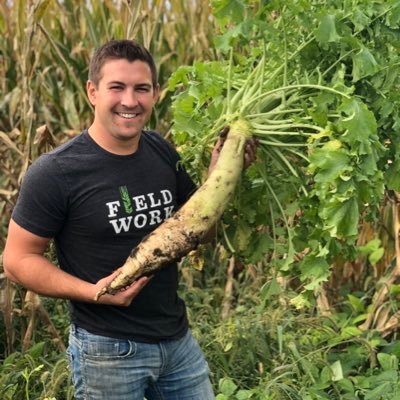 Mitchell Hora
Mitchell Hora
@Continuum_Ag -
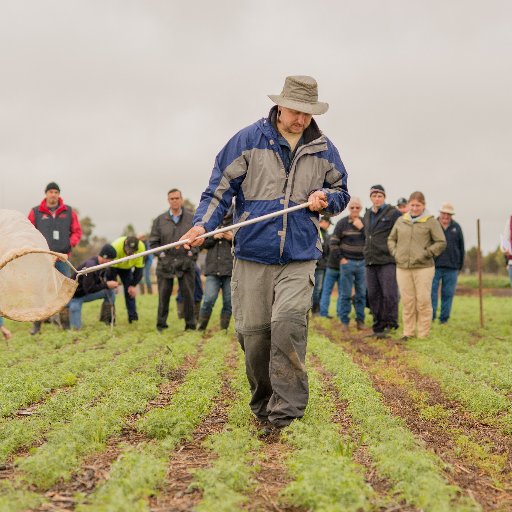 Jonathan Lundgren
Jonathan Lundgren
@BugLundgren -
 Kris Nichols
Kris Nichols
@glomalin -
 Greenhouse Grower
Greenhouse Grower
@greenhousegrow -
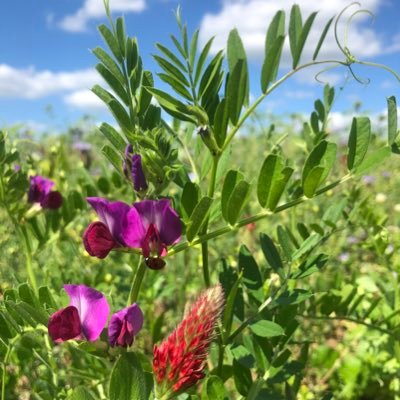 The Green Farm Collective
The Green Farm Collective
@TheGreenFarmCo1 -
 Green Cover Seed
Green Cover Seed
@GreenCoverSeed -
 John Kempf
John Kempf
@realJohnKempf -
 Savory Institute 🌱🐂🌍
Savory Institute 🌱🐂🌍
@SavoryInstitute
Something went wrong.
Something went wrong.





















































